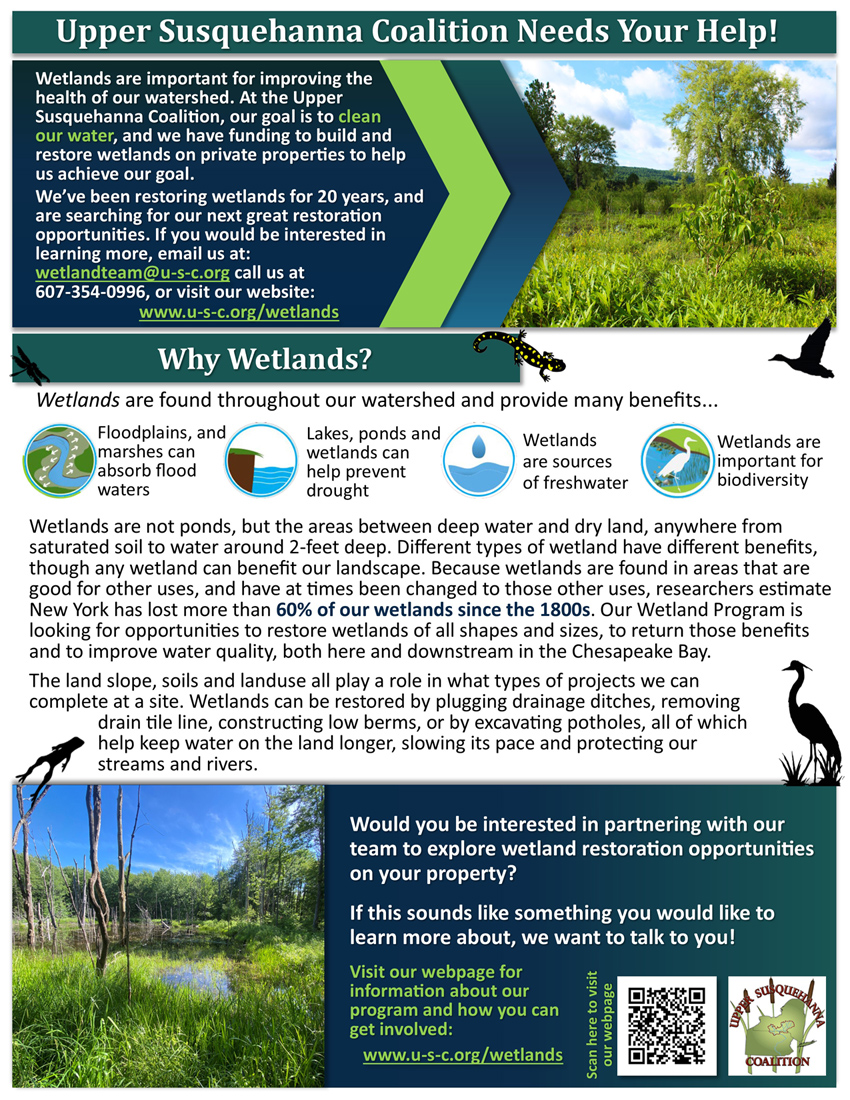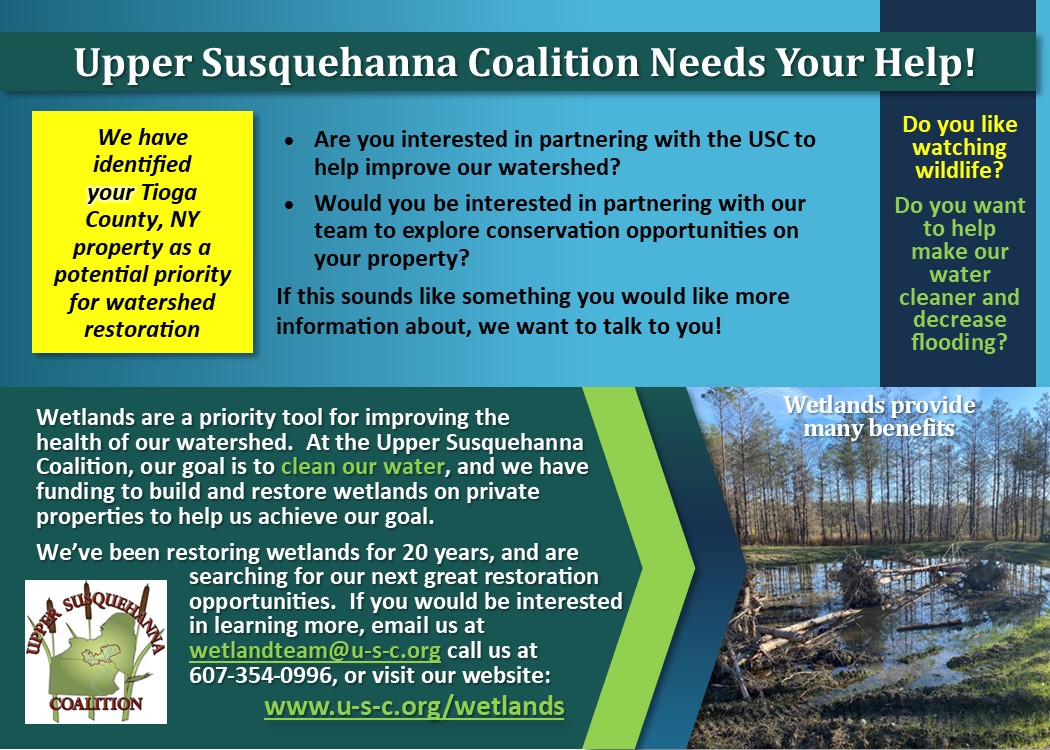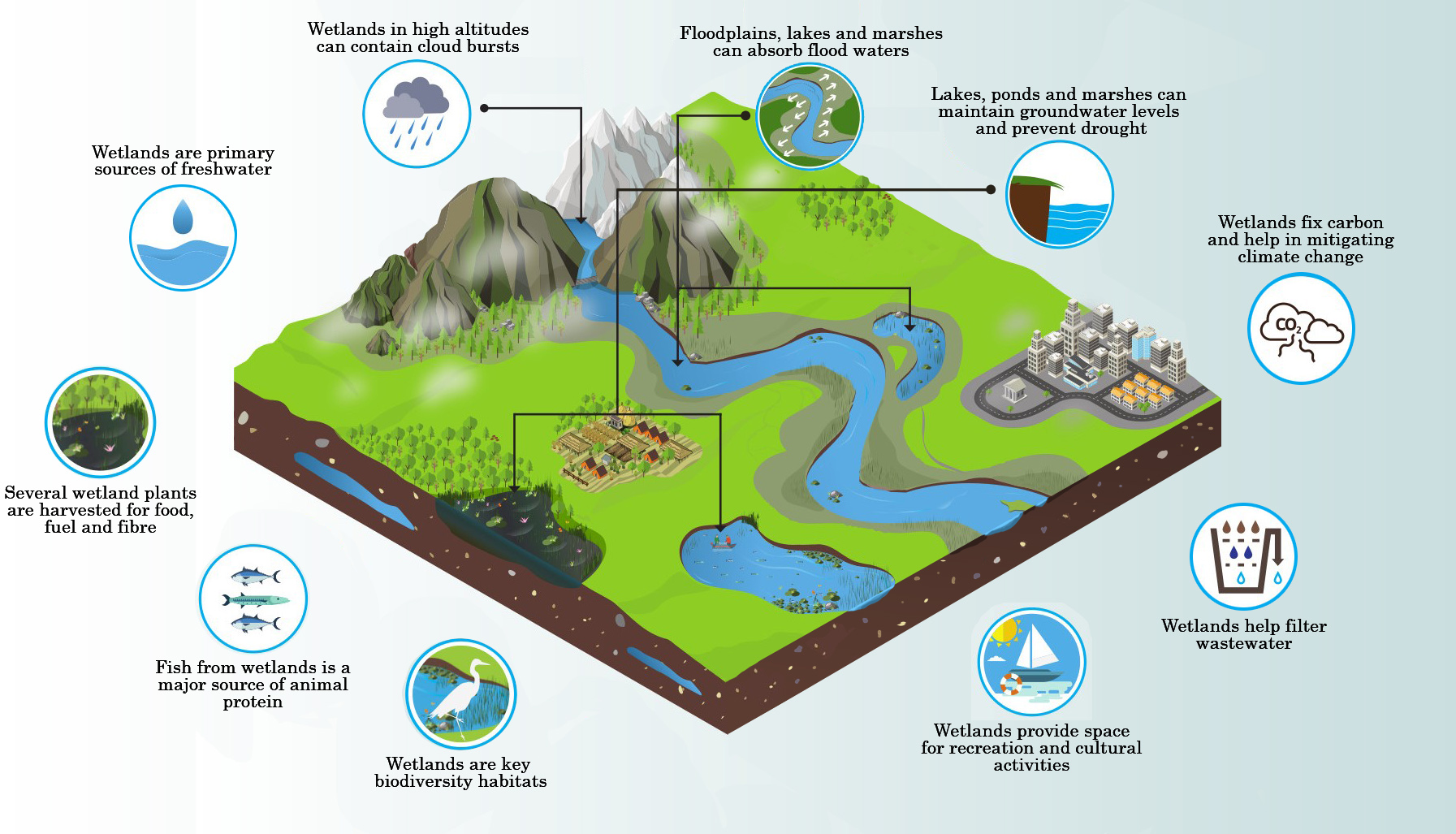USC Wetland Team
Our Wetland Team delivers wetland conservation on a watershed scale. Many people recognize wetlands provide nutrient and runoff retention as well as habitat, but their benefits are often overlooked across the watershed. For that reason our team is dedicated to increasing wetland restoration and expanding wetland education and understanding across our region. We support many wetland-related programs, providing site review, monitoring, design, construction and maintenance to partners, members and other USC teams alike.
Targeted 2025 Projects
- Assist USC Members and staff with navigating DEC’s updated wetland regulations
- Expand targeted wetland outreach
- Develop Chesapeake Bay Wetlands Action Strategy for New York
- Construct USC Water Quality Program wetland restoration projects
- Seek grant funds to increase restoration
Contact the USC Wetland Team for more information: by email wetlandteam@u-s-c.org or by phone 607-689-2785
Wetland Team Events
Wetland Team News
Watershed Wednesdays – 2020’s Version of a Watershed Forum
Planning for our fifth annual Watershed Forum ground to a halt in early spring, leaving our planning committee
Earth Day, the Distancing-Friendly Way
Check out the videos we developed for family-based earth week activities: Stream Cleanups and Visiting a Vernal Pool
Project Spotlight: Tioga County Highlights
By: Tioga County SWCD, Owego, NY, USC Member Streamside Conservation on a Local Farm What was the






